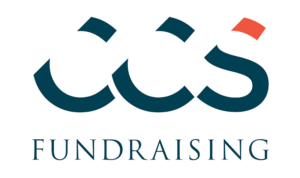As the summer break approaches, and with it the conclusion of the annual fund, it is a moment to take stock and evaluate your achievements this year. It is also a critical juncture at which to put in place strategies to ensure you realize even greater success in the year ahead. Those schools which see most progress with their annual giving programs are those that keep up activity throughout the quieter summer months.
Analyze the Past Year
Undertaking a detailed assessment of giving trends (for example, donor acquisition and retention, or alumni and parent giving) for the past year will help you form a comprehensive basis from which to build out your annual fund strategy for the year ahead. It is crucial to truly understand:
- Your donor pipeline: where have you had the most success moving donors through your pipeline to higher giving levels?
- Campaign success: what messaging, appeals, and engagement strategies have inspired greater philanthropy and secured the greatest number of dollars? Can you identify the ROI for each appeal to help create efficient and effective strategies?
- Staff resource: has the time your fundraising team invested in managing your donor segments realized the returns you had projected?
While it may be easiest to launch the next annual campaign with your existing formula, this approach will inhibit your capacity to fully reach the depths of your donor pool. Conducting an honest analysis to answer the questions above will reveal where changes, even small ones, could inspire even greater philanthropic support.
Exemplary annual giving programs take the time to refresh (or create) differentiated strategies for their varying constituent groups. Considering the messages and communication channels which resonate most strongly with your recent and more distant alum, parents, past parents, and friends will serve to hold them close to your mission year after year.
Over time, your prospect pool both grows and changes. Younger alums differ from older alums in their philanthropic behavior and ambitions, as do parents and past parents. A frank assessment of your staffing allocation can shine light on whether you are focusing your resource in the most effective way to reflect each constituent group’s current needs and giving behaviors and foster their philanthropic relationship with your school most effectively.
Summertime Stewardship
The summer break also presents an opportunity to focus on donor stewardship. In addition to communicating to your entire donor community at yearend the impact of their giving, ensuring specific donor segments are given individual consideration will garner future value. New donors can be warmly welcomed to your philanthropic community with additional touchpoints to carry them forward into your retained donor pool. Donors celebrating notable giving anniversaries can be personally acknowledged with extra touches to those received at the time of their gift. Taking stock of your community to identify those donors whose giving merits thoughtful stewardship during the summer months will generate lasting goodwill.
Giving Society Strategy
An engaging set of giving societies will have a demonstrable impact for any annual program by developing a pipeline of major gift prospects and holding existing ones close. To fully maximize their potential requires thoughtful strategic intention behind a donor’s entry to your threshold giving society and their journey through higher levels. The summer months are an ideal time to review the pipeline for your first tier giving society and to consider:
- Do you have a clear set of top prospects who will be invited to join this giving society in the coming year and a plan for their cultivation?
- Which donors will be invited to move up to the next tier giving society and how will you compel them to do so?
Crafting a strategy which answers these questions will provide you with a series of messages and actions to implement over the coming year to ensure your future major donors are kept close to your school and its mission.
Confirming Your Campaign Goal
How do you arrive at your annual fund campaign goal each year? Is it based upon analysis of your donor pool’s giving potential and historical giving behavior or is the gap between the operational budget and expected tuition taken as the figure for the annual goal? By necessity, many schools take the latter path. Yet, collaboration between finance and advancement teams to determine a campaign goal which accounts for both institutional need and pipeline potential can result in greater understanding, and support for, the work of the development office. Thoughtful goal setting of this kind can also help to avoid short-termism in fundraising efforts wherein major gift officers prioritize securing a gift now over cultivating a donor for a larger gift in the future.
Summary
Each year of an annual fund campaign is deeply interlinked. Amplifying the collective value of each year’s annual fund efforts requires sophisticated data analysis of donor behavior coupled with thoughtful and active management of the prospect pipeline in response to the trends identified. The upcoming summer break is your moment to start planning.
More Insights
AI + Fundraising Webinar
Explore the transformational potential of artificial intelligence in modern fundraising practices in this video featuring leading experts and practitioners in the field.
2024 Philanthropic Landscape, 13th Edition
This report provides a comprehensive look at the current state of US philanthropy, compiling and analyzing annual data from Giving USA and other prominent research to ensure your organization stays up-to-date on the most significant industry trends.
